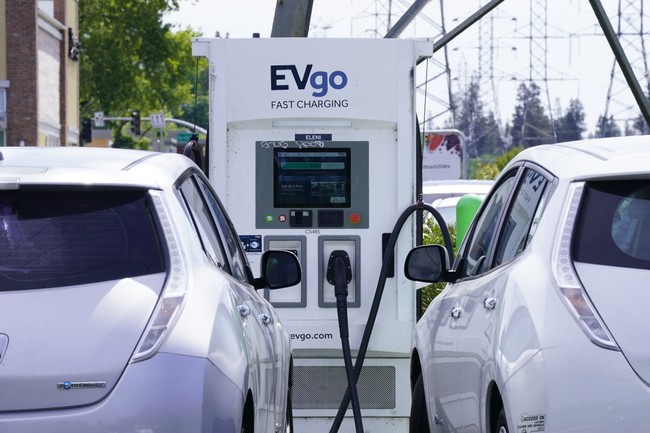
When I was a young, impoverished second lieutenant taking my Officer’s Basic Course (OBC) at Ft. Sam Houston, Texas, the base Bachelor Officer’s Quarters (BOQ) was at capacity, so I was told to get an apartment off-post. I did so; I found an apartment building about a 10-minute drive from the Army Academy of Health Sciences, on Eisenhauer Road. It was a little place but cheap; a basic one-bedroom, second-story walk-up, with hot and cold running cockroaches – at no extra charge! Since everything I owned in the world at that time fit in the back of my pickup, it worked out pretty well, once I had applied some pesticides to deal with the bugs.
Advertisement
That pickup, by the way, was parked under a long carport out back of the building, but that was fine. The truck was covered, and since my truck was gas-powered, as they all were in the mid-80s, there was no problem.
But if I had somehow owned an electric vehicle (EV) back then? Well, then there would have been a problem. No place to plug it in, you see.
In the United Kingdom, that problem is already developing today with EV owners, causing a new class divide between those who can charge their EVs at home, and those who cannot.
But I have an advantage in the electric transition: the humble driveway. Unlike almost half of the country who live in terraced housing or flats, my dwelling has a dedicated parking pot where I have been able to install a wall-mounted charger.
In a petrol-powered world, the driveway divide did not matter. Whatever one’s domestic circumstances, we all had to queue up at the forecourt and pump fuel into our vehicle every few hundred miles. In the electric age, meanwhile, driveway ownership divides motorists into haves and have-nots.
In other words, people who own homes with garages and driveways can plug their cars right in, meaning they are topped up every day before they leave the house. But someone living in an apartment, like that one of mine from long ago? You are either dependent on fee-charging public charging stations, or you have to procure a really, really long drop cord.
Advertisement
The more people adopt EVs, the more you’ll start to see this in American cities – some of those cities and even states are trying to force you to adopt EV use whether you like it or not.
See Related: Biden EPA Just Rubber-Stamped CA Ban on New Gas Autos After 2035. Will Trump Reverse It?
Joe Biden’s Other Green Debacle—Billions Thrown at USPS for Tiny Number of Electric Delivery Trucks
Then there’s the other new problem; the Daily Sceptic’s “Sallust,” commenting on the Telegraph piece linked above, writes:
Something Titcomb doesn’t mention is the prospect of a whole new type of protocol also. EV owners who’ve driven a long way will turn at up relatives’ or friends’ houses expecting to plug in on arrival, rather than filling up at a local petrol station, won’t they? Adult children rolling up for the weekend will do the same. It’d be as if in the old days the host was expected to have half a dozen cans of petrol waiting in the porch.
OK, so this isn’t as new as some might think; when and where I was a kid, many if not most rural homes had an elevated gas tank with a hose for filling up trucks and equipment, and most of us young people would occasionally pull up our cars and trucks and poach a little of the Old Man’s gasoline. But it’s not something that most folks have ever had to deal with, so it’s a real concern – and how much will it cost the homeowner, to let the kids plug in while they are visiting?
Advertisement
How long will it be before people start demanding “charging justice”? How long before they start claiming “EV charging is a human right”? It’s not, but that’s never stopped the left before.
In the United Kingdom, and soon enough, here, more people will start encountering this problem. This is just another example of the Law of Unintended Consequences spinning around and sinking its teeth into the rear ends of the electric vehicle proponents.
